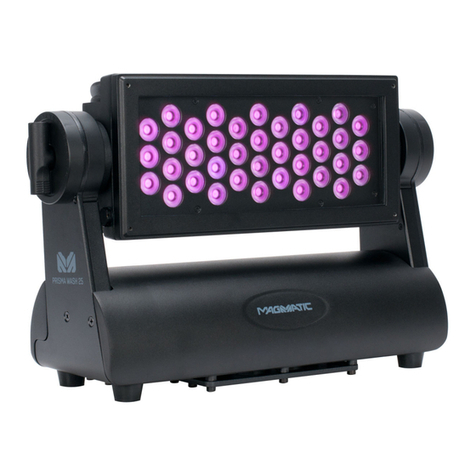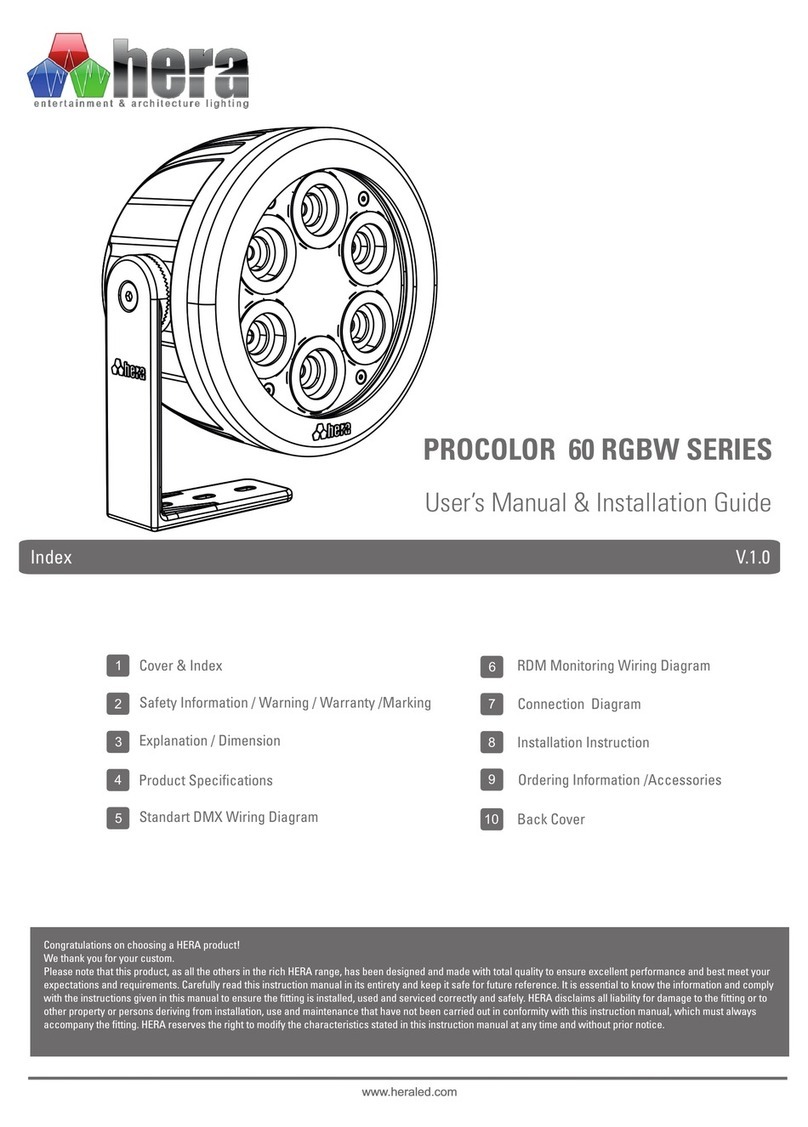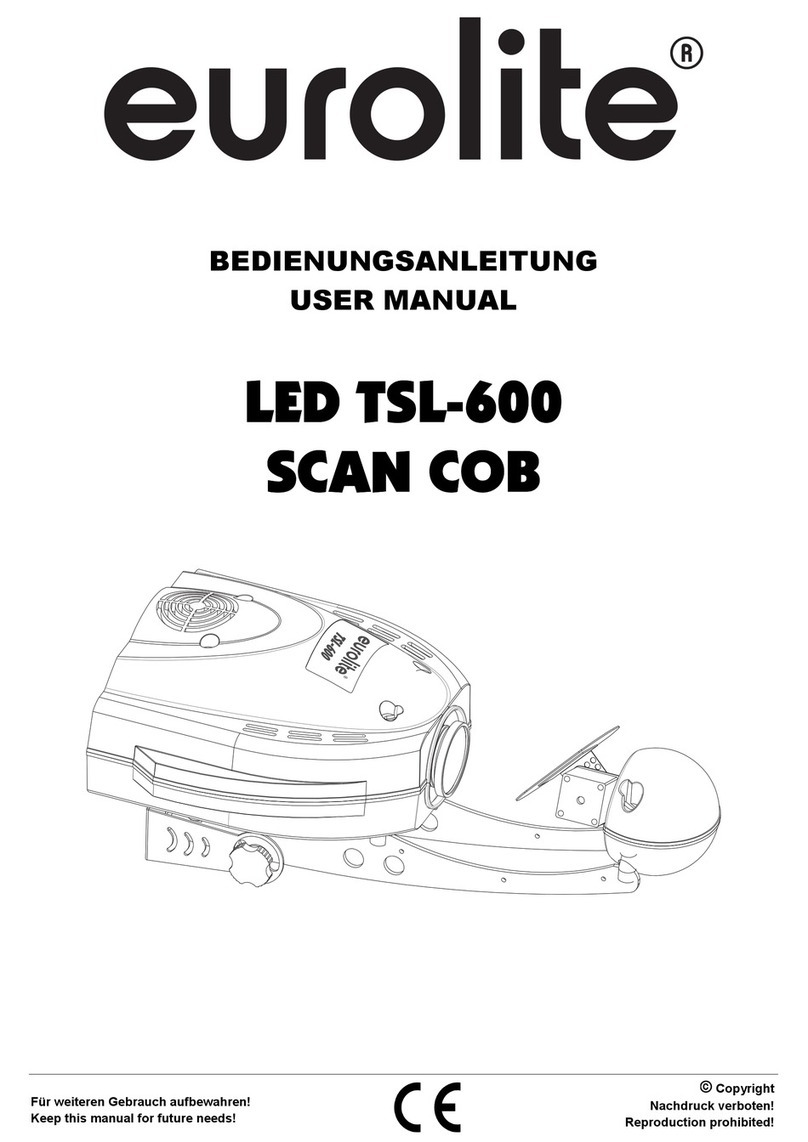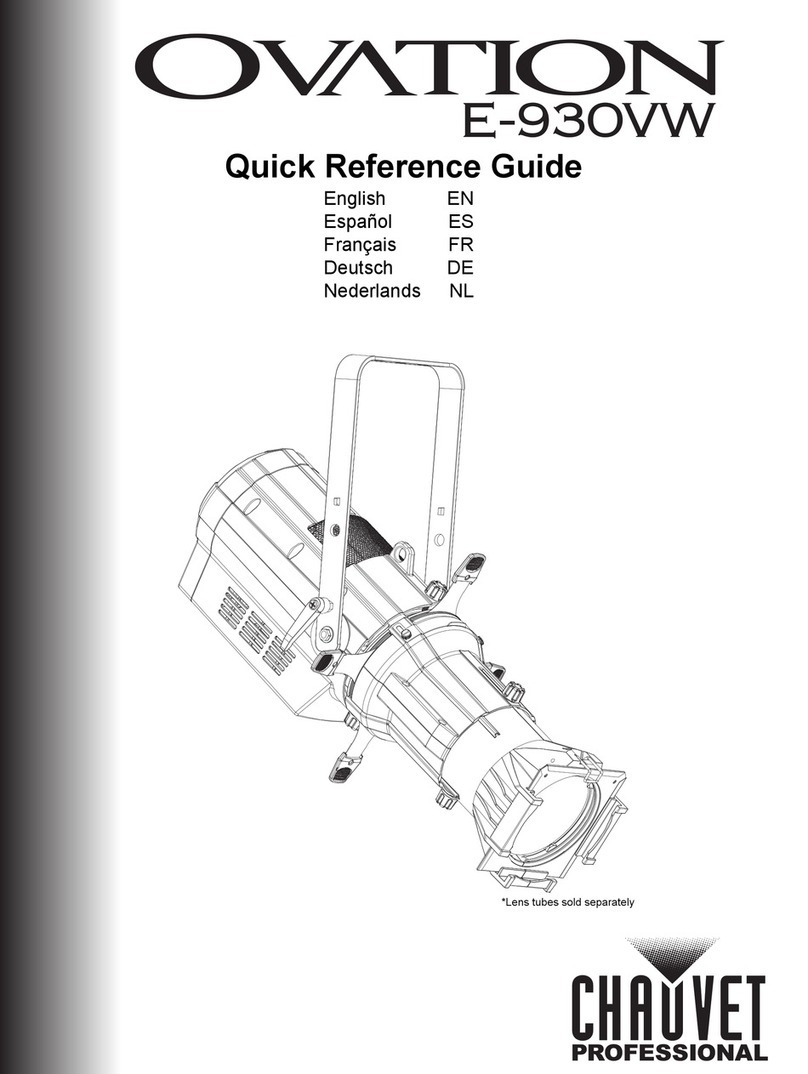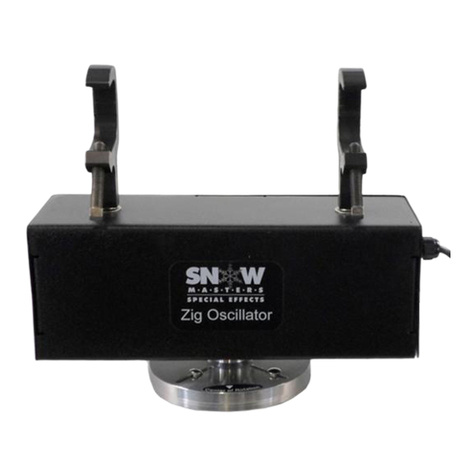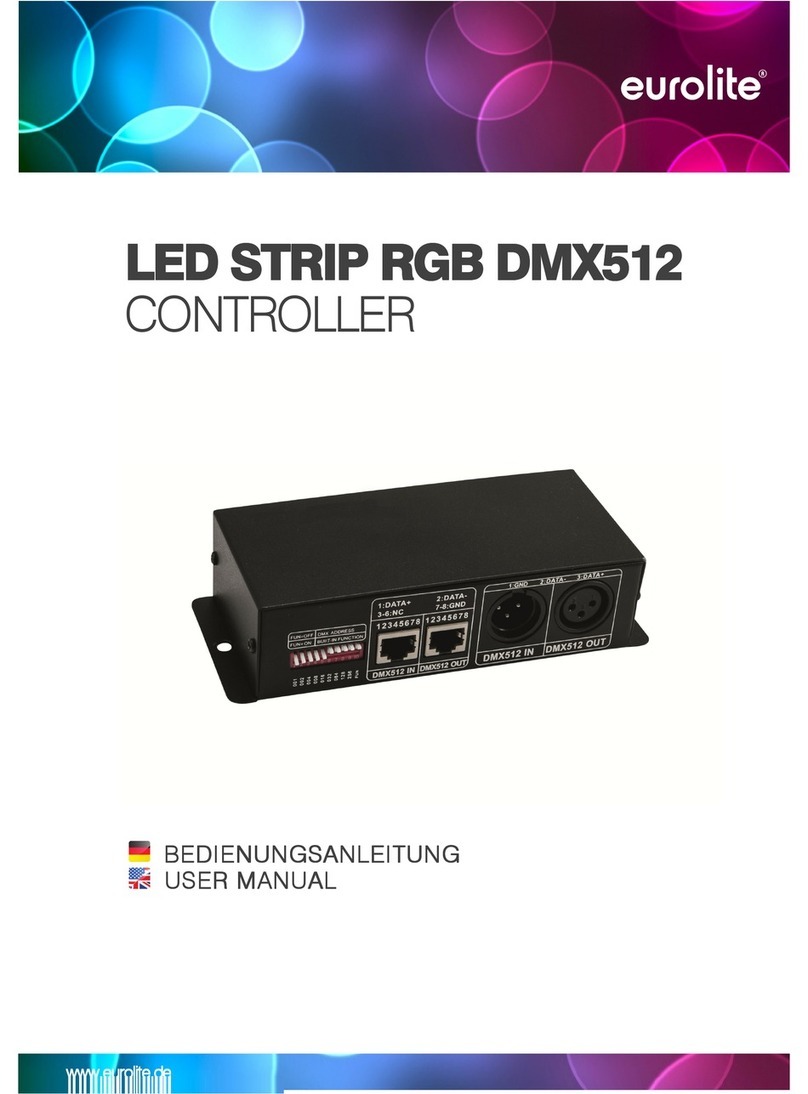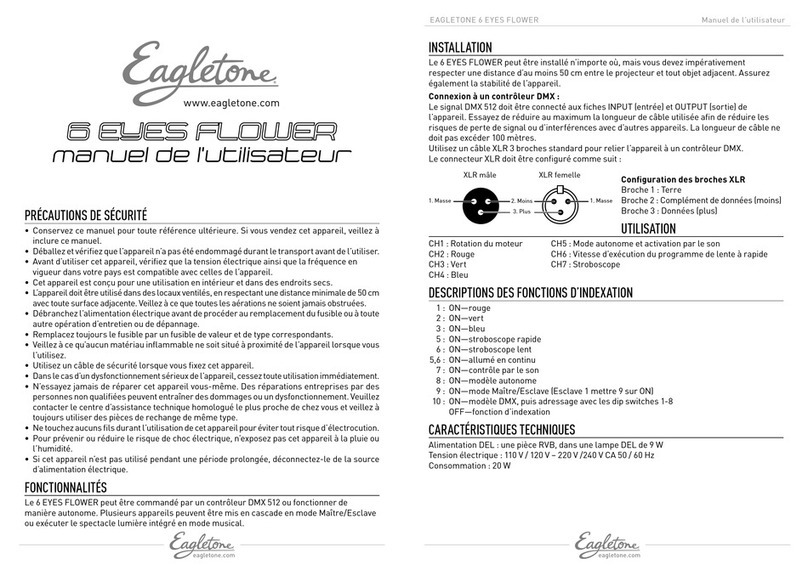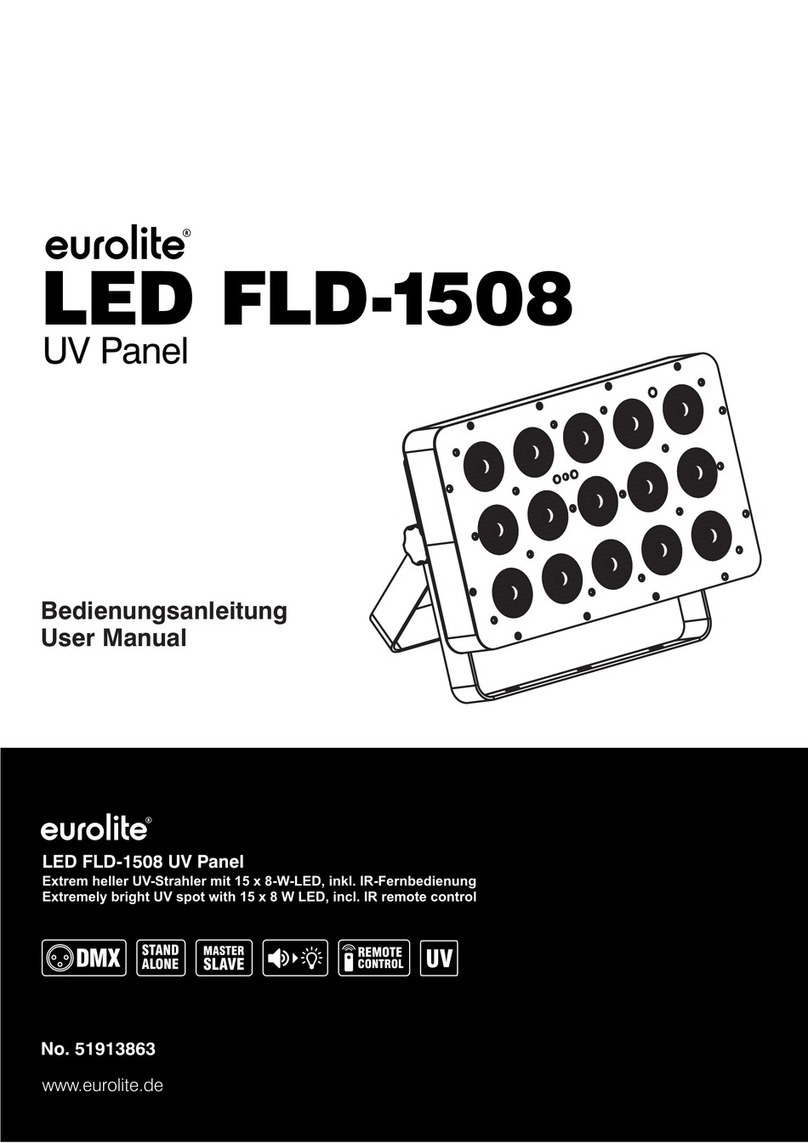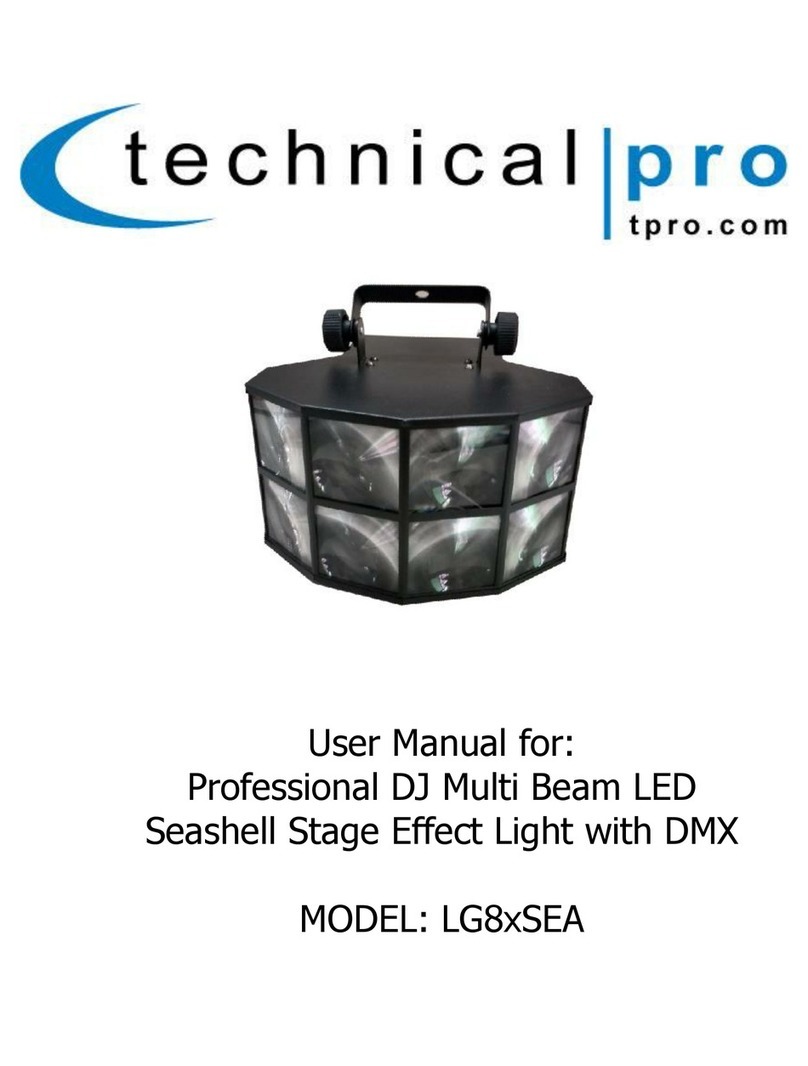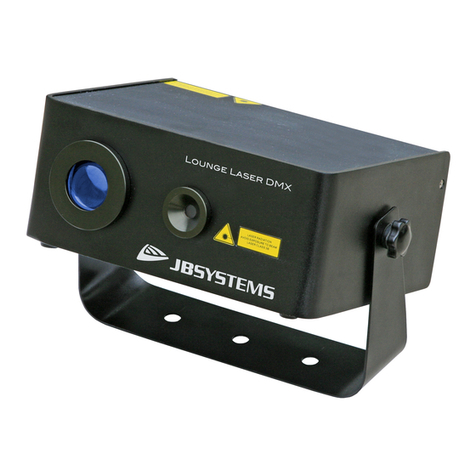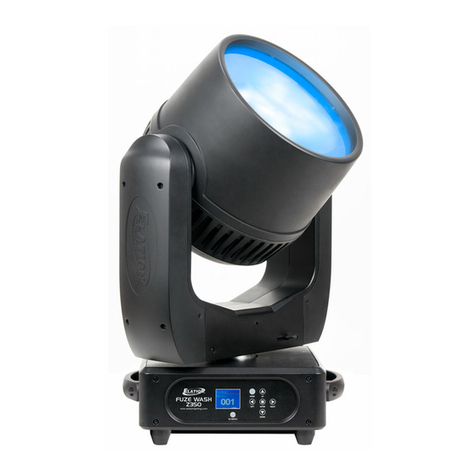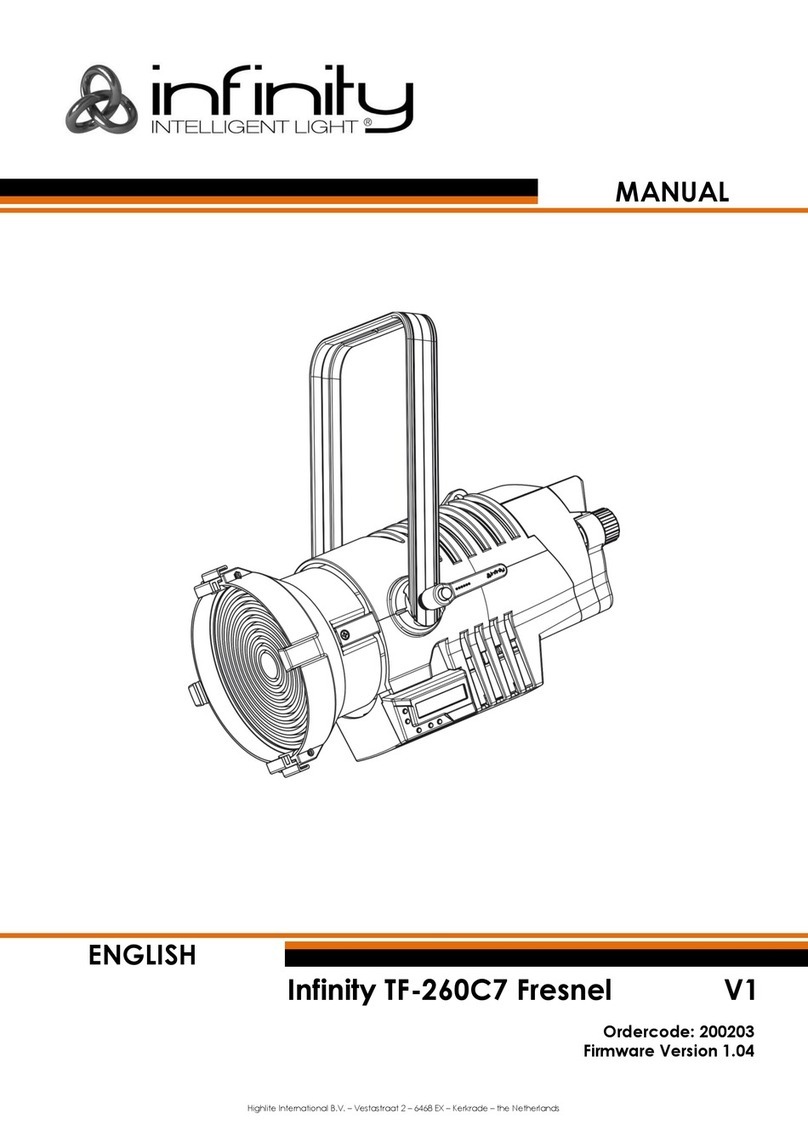Sirennet SNLBL10 User manual

Page 1 of 12
IMPORTANT!
Read all instructions before installing and using. Installer: This manual must be delivered to the end user of this equipment.
INSTALLATION & OPERATION MANUAL
This manual contains installation, operation, and programming instructions for the
Sirennet SNLBL10 47" LED Lightbar.
Contents:
Introduction, Fusing Considerations, Warnings..................................2
Installation & Mounting....................................................................3-4
Maintenance.......................................................................................5
Warning Signal Modules.................................................................5-6
3 Level Modes of Operation...............................................5
Selecting Flash Patterns....................................................6
Traffic Arrow Functions........................................................................7
Takedown and Alley Light Modules......................................................8
Steady Burn Setting.............................................................................9
Diagnostic Testing, Harness Wiring Guide.........................................10
Notes.................................................................................................11
Warranty............................................................................................12
STOP! If you prefer to program with SmartPro, refer to manual number 920-0451-00.
ST
OP

Page 2 of 12
WARNING!
The use of this or any warning device does not ensure that all drivers can or will observe or react to an emergency warning
signal. Never take the right-of-way for granted. It is your responsibility to be sure you can proceed safely before entering an
intersection,drivingagainsttrafc,respondingatahighrateofspeed,orwalkingonoraroundtrafclanes.
The effectiveness of this warning device is highly dependent upon correct mounting and wiring. Read and follow the manufac-
turer’s instructions before installing or using this device. The vehicle operator should insure daily that all features of the device
operate correctly. In use, the vehicle operator should insure the projection of the warning signal is not blocked by vehicle com-
ponents (i.e.: open trunks or compartment doors), people, vehicles, or other obstructions.
This equipment is intended for use by authorized personnel only. It is the user’s responsibility to understand and obey all laws
regarding emergency warning devices. The user should check all applicable city, state and federal laws and regulations.
Sirennet assumes no liability for any loss resulting from the use of this warning device.
Proper installation is vital to the performance of this warning device and the safe operation of the emergency vehicle. It is
important to recognize that the operator of the emergency vehicle is under psychological and physiological stress caused by the
emergency situation. The warning device should be installed in such a manner as to: A) Not reduce the output performance of
the system, B) Place the controls within convenient reach of the operator so that he can operate the system without losing eye
contact with the roadway.
Emergency warning devices often require high electrical voltages and/or currents. Properly protect and use caution around live
electrical connections. Grounding or shorting of electrical connections can cause high current arcing, which can cause personal
injuryand/orseverevehicledamage,includingre.
PROPER INSTALLATION COMBINED WITH OPERATOR TRAINING IN THE PROPER USE OF EMERGENCY WARNING
DEVICES IS ESSENTIAL TO INSURE THE SAFETY OF EMERGENCY PERSONNEL AND THE PUBLIC.
Utilizing non-factory supplied screws and/or mounting brackets and/or the improper number of screws may result in
loss of warranty coverage on the equipment.
Larger wires and tight connections will provide longer service life for components. For high current wires it is highly recom-
mended that terminal blocks or soldered connections be used with shrink tubing to protect the connections. Do not use
insulation displacement connectors (e.g. 3M®Scotchlock type connectors). Route wiring using grommets and sealant when
passing through compartment walls. Minimize the number of splices to reduce voltage drop. High ambient temperatures (e.g.
underhood)willsignicantlyreducethecurrentcarryingcapacityofwires,fuses,andcircuitbreakers.Use"SXL"typewire
in engine compartment. All wiring should conform to the minimum wire size and other recommendations of the manufacturer
and be protected from moving parts and hot surfaces. Looms, grommets, cable ties, and similar installation hardware should
be used to anchor and protect all wiring. Fuses or circuit breakers should be located as close to the power takeoff points as
possible and properly sized to protect the wiring and devices. Particular attention should be paid to the location and method
of making electrical connections and splices to protect these points from corrosion and loss of conductivity. Ground termina-
tions should only be made to substantial chassis components, preferably directly to the vehicle battery. The user should install
a fuse sized to approximately 125% of the maximum Amp capacity in the supply line to protect against short circuits. For
example,a30Ampfuseshouldcarryamaximumof24Amps.DONOTUSE1/4"DIAMETERGLASSFUSESASTHEYARE
NOT SUITABLE FOR CONTINUOUS DUTY IN SIZES ABOVE 15 AMPS. Circuit breakers are very sensitive to high tempera-
turesandwill"falsetrip"whenmountedinhotenvironmentsoroperatedclosetotheircapacity.
This Product contains high intensity LED devices. To prevent eye damage, DO NOT stare into light beam at close
range.
The Dim setting reduces the light output of emergency warning lights reducing the effectiveness of them especially
in brightly lit areas. Failure to use adequate light for the circumstances can cause motorists to fail to see the emer-
gency vehicle and lead to serious personal injury or death. Never use the DIM setting in a brightly lit area. Use of
the DIM setting may cause emergency lights to not comply with applicable emergency warning light standards. Use
caution when using the DIM setting to assure that motorists can clearly see the emergency vehicle.
!
WARNING! !
WARNING!
WARNING! !
WARNING!
!
Lamps are extremely hot! Allow to cool completely before attempting to remove. Gloves and eye protection should
bewornwhenhandlinghalogenlampsastheyarepressurizedandaccidentalbreakagecanresultinyingglass.
WARNING! !
!
Introduction:
The Sirennet SNLBL10 Lightbar is a light bar that is approximately 2” high, yet delivers unobstructed 360° warning and more signal power and
versatility than any other light bar of its size through the use of state-of-the-art optics.Thelowprofileandaerodynamiclinesreduceairdrag,whichresults
infuel savings and stability at high speeds. This light bar has a strong extruded internal frame, shock-resistant polycarbonate lenses, and warning
signals that exceed SAE standards. The light bar is designed on a modular basis, which means that the light bar can be customized to meet any
requirement. It has room fornumeroushalogenandLEDoptions,andofferstheultimateflexibilityinthelocationofwarningandauxiliarylights.
Fusing Considerations:
The light bar should be installed with an external fuse or circuit breaker in the RED lead of the 11 conductor cable. The recommended external fuse size for
the light bar is 15A. The internal circuitry of the Central Controller is reverse polarity protected. Each output on the Central Controller board is protected
against over current and over heating with automatically resetting output devices.

Installation and Mounting
Unpacking and Pre-Installtion:
Carefullyremovethelightbarandplaceitonaflatsurface,takingcarenottoscratchthelensesordamagethecablecomingoutofthebottom.
Examinetheunit for transit damage, broken lamps, etc. Report any damage to the carrier and keep the shipping carton.
Standard light bars are built to operate on 12 volt D.C. negative ground (earth) vehicles. If you have an electrical system other than 12 volt D.C.
negative ground (earth), and have not ordered a specially wired light bar, contact the factory for instructions.
Test the unit before installation. To test, touch the black wire to the ground (earth) and the other wires to +12 volts D.C., in accordance with the
instructions at-tached to the cable (an automotive battery is preferable for this test). A battery charger may be used, but please note that some
electronicoptions(flashers,etc.)may not operate normally when powered by a battery charger. If problems occur at this point, contact the factory.
Mounting Hardware:
All mounting hardware is packed in a small box inside the main carton. Four standard kits are available: (1) Hook-On Type, (1) Tow and Recovery
and (2) Permanent Types. These are discussed in detail later. NOTE:Hook-onmountingfor"gutterless"typevehicleswillrequireaspecialhook
formounting.Severalspecial application hooks are available. Contact the factory for details.
Hook-on Mounting:
Begintheinstallationbyattachingtherubberfeettothemountingbracketsusingtheblack1/4"carriageboltsand1/4"nutsprovided.SeeFigure8.
(Donotinstallshimsatthistime).Placethelightbarupsidedownonatableorotherworksurface,beingcarefulnottoscratchthelenses.Slidethe
5/16"carriageboltsintotheframe.Securethemountingbracketsfingertightsotheysupporttheweightofthelightbar,butcanstillbepositioned.
Locatethevehicleonalevelsurface.Place the light bar on the roof of the vehicle. Place a soft pad in the center of the roof to protect the paint. The
mounting brackets must be placed so that the rubber feet are resting on the curved section of the roof, see Figure 9. This is the strongest part of the
roof. Once the light bar is centered, tighten the mount-ing bracket to the light bar. Using a tape measure and a level, center the light bar from side to
side and locate a position on the roof where the light bar is level.
Mounting Bracket
Bottom of Lightbar
1/4-20 Carriage Bolt
5/16" Split Lockwasher
5/16" Trim Nut
(Do Not Overtighten)
Plastic Shim (if needed)
Rubber Foot
1/4" Acorn Nut
5/16" Nut
FIGURE 8
Gutter Hook
5/16-18 Carriage Bolt
The shims provided may be used here to help level the light bar, see Figure 8. Also, the tabs on the mounting brackets may be bent at any angle to
match the curvature of the roof. Select the appropriate length cap screw and insert through the holes in the gutter hook and mounting bracket, and into
a lock washer and acornnutasshowninFigure8.Ifaspecialhookfora"gutterless"vehicleisused,refertotheinstructionsforthathookatthistime.
Thestainlesssteelcapscrews supplied are sized for the most common installations, but longer and shorter bolts are available at any hardware store.
Tighten the cap screws on both sides evenly keeping the light bar centered and level.
Page 3of 12
FIGURE 9
Vehicle Gutter
Curved Feet on Curved
Portion
Vehicle Roof

Page 4of 12
NOTE: Tighten only until the bar is secure (bar does not move when bumped sharply with the heel of the palm). It is NOT necessary to dimple the
roof to obtainastableattachment.Ifthelightbar"bows"morethan3/16"(determinedbyplacingastraightedgealongthefront,bottompartofthe
frameandmeasuringdownwardatthecenteroftheframe),loosenthe5/16"trimnutsightly.
Re-Installation: When moving a light bar from one vehicle to another, we suggest that new rubber feet be used. These are standard hardware items,
and can usually be found at any hardware store, or can be ordered from the factory. The special hooks are stainless steel and should be saved and
reused. Mounting kit parts are available to permit remounting on vehicles of different design or make. Consult the Sirennet team for detailed
information.
Permanent Mounting:
Typical Mounting:RefertoFigure10.Placethelightbarupsidedownonatableorotherworksurface,beingcarefulnottoscratchthelenses.Slide
the5/16"carriageboltsintotheframe.Securethemountingbracketsfingertightsotheysupporttheweightofthelightbar.Placetheunitonthe
roofofthevehicle.Place a soft pad in the center of the roof to protect the paint. The mounting brackets must be placed so that they are resting on
the curved section of the roof, see Figure 11. This is the strongest part of the roof. Once the light bar is centered, tighten mounting brackets to light
bar. Using a tape measure and a level, center the light bar from side to side and locate a position of the roof where the light bar is level. The shims
provided may be used here to help level the light bar. Also, the tabs on the mounting bracket may be bent at any angle to match the curvature of the
roof (see Figure 11).
Mounting Bracket
5/16-18 Carriage Bolt
Customer Supplied Bolt
Plastic Shim (if needed)
Rubber Foot
5/16" Nut
FIGURE 10
Bottom of Lightbar
FIGURE 11
Curved Roof
Flat Roof Place Feet on Curved
Portion
Once the light bar is level and centered, mark the holes through the mounting tabs and remove the light bar from the vehicle. Make sure that the
drill will not damageanythingwhenpenetratingtheroof.Drillthemountingholesandremoveanyburrs.Attachmentcanbemadeusing1/4"cap
screws,togglebolts,orother fasteners as may be convenient. Use sealant as necessary to prevent water leakage into the vehicle.

Page 5of 12
Lens Removal (Screws):
With a Phillips screwdriver, remove the cap attachment screws (with neoprene washers). Insert a small screwdriver blade (or coin) into the small slot
a the cornerofthelenscapandtwistthescrewdrivertoliftthecap.Thengentlyliftthecapoff.Whenfinishedcarefullyreplacethecapmakingsure
thelensgasketis not misplaced, then replace the cap mounting screws making sure the neoprene washers are in place.
Warning Signal Modules
There are seven possible 3-Level modes of operation (see Table 1). These modes are activated by combinations of the L1 (GRN/BLK), L2 (WHT/
BLK) and L3 (RED/BLK) wires. For example a standard progressive switch will use the Level-1 (L1), Level-2 (L1 + L2) and Level-3 (L1 + L2 + L3)
modes. When using individualswitches,makesuretoconfigureallpossibleswitchcombinations. Repeat steps 1 through 3 for each of the seven
possible 3-Level modes as desired.
TABLE 1: 3-LEVEL MODES OF OPERATION
MODE NUMBER WIRES ACTIVATED
L1 GRN/BLK (LEVEL-1)
L2 WHT/BLK
L1+L2 GRN/BLK & WHT/BLK (LEVEL-2)
L3 RED/BLK
L1 + L3 GRN/BLK & RED/BLK
L2 + L3 WHT/BLK & RED/BLK
L1 + L2 + L3 GRN/BLK, WHT/BLK, & RED/BLK (LEVEL-3)
Maintenance
Lens Cleaning:
Use plain water and a soft cloth, or lens polish and a very soft paper towel or facial tissue. Because plastic scratches easily, cleaning is recommended
only when necessary (about every six months). Do not subject the lenses to car washes that use brushes, as these will scratch the lenses.
Lens Removal (Clips):
First, disengage the lens clips (4 per lens) as shown in Figure 12. Finally,
insert a screwdriver into the small slot in the lens clip pocket or the lens
edge, and twist the screwdriver to lift the lens.
FIGURE 12
Twist to Lift
Lens
Pry Up to
Remove
Lens Clip
Table of contents
